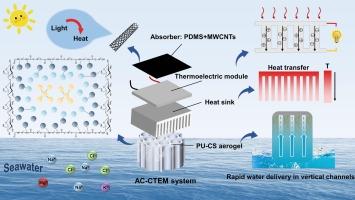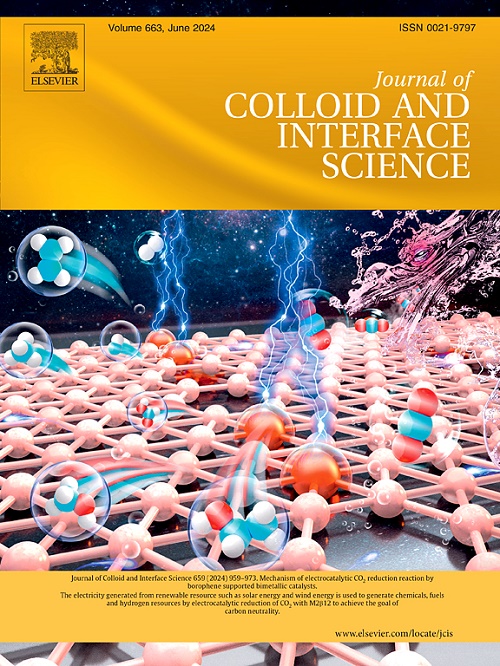A system for efficient and sustainable cogeneration of water and electricity: Temperature difference induced by photothermal conversion and evaporative cooling
Abstract
Solar energy, with its sustainable properties, has garnered considerable attention for its potential to produce green electricity and clean water. This paper proposes a multistage energy transfer co-generation system (MWCNTs-covered thermoelectric module with aerogel and cooler, AC-CTEM) combining power generation and evaporative cooling. On the light-absorbing surface, the hot side of a thermoelectric module is covered with a hydrophobic coating made of PDMS and MWCNT. The cold side transfers heat to the evaporation zone using a heat sink. Aerogel evaporators are cross-linked with chitosan and polyurethane, which reduces the enthalpy of evaporation and facilitates efficient interfacial evaporation to remove heat and return it to refrigeration. Additionally, with the addition of Fresnel lenses and wind energy to the enhancement device, the system achieved an evaporation rate of 3.445 kg m−2 h−1 and an open-circuit voltage of 201.12 mV under 1 kW m−2 solar irradiation. The AC-CTEM system also demonstrated long-term stability and effectiveness in treating various types of non-potable water. Furthermore, we demonstrated the practical utility of the system by successfully cultivating grass seeds and powering electronic equipment. The AC-CTEM system exemplifies a practical energy-saving approach for the development of highly efficient co-generation systems.


 求助内容:
求助内容: 应助结果提醒方式:
应助结果提醒方式:


